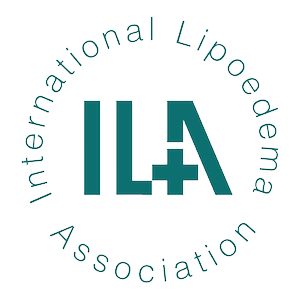Bryan Groleau
COTA/L, CLT-LANA, CLWT, WCC, LLE
National Senior Clinical Education Manager – medi
Providing Awesome CDT in Home Care
Friday, May 3, 9:00am – 9:30am
Home health care accounts for 20% of post-acute care treatment in the U.S. with strong projected growth expected over the next 30 years. Among this population are patients requiring treatment for lymphedema, often with multiple precautionary co-morbidities, open wounds, and or a mixture of edema types within the limb. Proper care of these patients can be challenging because most lymphedema therapists practice in outpatient settings. This presentation will explain how to develop a safe plan of care based on an understanding of the physiology and etiology of the patient’s condition. Attendees will gain a basic understanding of the home health setting and the role that complete decongestive therapy plays in the care of homebound patients.
- Identify the most common type of lymphedema in the home health setting.
- List three characteristics that differentiate lymphedema and edema.
- List four factors that contribute to lower-extremity lymphedema and edema.
- Describe three modifications to complete decongestive therapy (CDT) that are appropriate for lower-extremity phlebolymphedema patients in home health.
- List four guidelines that are imperative to CDT treatment in the home.
- Describe three key reasons why home health care agencies have difficulty addressing lymphedema.
Greene, A. K., Slavin, S. A., & Brorson, H. (Eds.). (2015). Lymphedema: Presentation, Diagnosis, And Treatment. Springer.
Huggenberger, K., Wagner, S., Lehmann, S., Aeschlimann, A., Amann-Vesti, B., & Angst, F. (2015). Health and quality of life in patients with primary and secondary lymphedema of the lower extremity. Vasa, 44(2), 129-137.
Epidemiology and Public Health, Centers for Disease Control and Prevention (CDC) – 2014
Farrow W. (2010). Phlebolymphedema-a common underdiagnosed and undertreated problem in thewound care clinic. The Journal of the American College of Certified Wound Specialists, 2(1), 14-23.
Baxter, Amy 2018. 2017 Hospice and Home Health Medicare Utilization Trends.

Bryan Groleau has been a lymphedema and wound therapist since 2003 with experience in breast cancer-related upper-extremity lymphedema and axillary web syndrome; lower-extremity obesity-related lymphedema and lipedema; head, neck, and facial lymphedema; wound care; stage III elephantiasis; geriatric mixed edemas; lymphatic filariasis; and lymphedema in the home-health setting. Throughout his career, Bryan has treated extensively in both outpatient and home-care settings. He has managed teams of lymphedema and wound therapists for multiple clinics and home health agencies.
Currently, Bryan is a National Senior Clinical Education Manager for mediUSA and also serves on the medi for help medical-missions project to treat and educate on lymphedema and wound care for those with lymphatic filariasis in Léogâne, Haiti.
Educating clinicians on advanced lymphedema and wound care is a passion of Bryan’s. His vast experience in various settings, scenarios, and with atypical diagnoses, will empower clinicians to feel confident when treating wounds and lymphedema, no matter their level of experience.
 Bryan Groleau
Bryan Groleau
 Bryan Groleau has been a lymphedema and wound therapist since 2003 with experience in breast cancer-related upper-extremity lymphedema and axillary web syndrome; lower-extremity obesity-related lymphedema and lipedema; head, neck, and facial lymphedema; wound care; stage III elephantiasis; geriatric mixed edemas; lymphatic filariasis; and lymphedema in the home-health setting. Throughout his career, Bryan has treated extensively in both outpatient and home-care settings. He has managed teams of lymphedema and wound therapists for multiple clinics and home health agencies.
Bryan Groleau has been a lymphedema and wound therapist since 2003 with experience in breast cancer-related upper-extremity lymphedema and axillary web syndrome; lower-extremity obesity-related lymphedema and lipedema; head, neck, and facial lymphedema; wound care; stage III elephantiasis; geriatric mixed edemas; lymphatic filariasis; and lymphedema in the home-health setting. Throughout his career, Bryan has treated extensively in both outpatient and home-care settings. He has managed teams of lymphedema and wound therapists for multiple clinics and home health agencies.




